#1880s day dress
Text


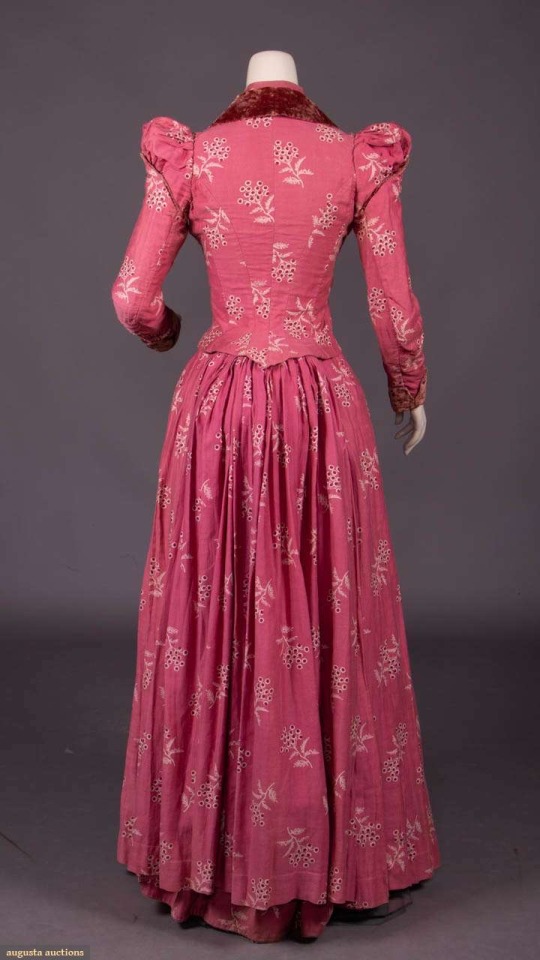
Pink Cotton and Velvet Day Dress, ca. 1889, American.
Augusta Auctions.
#womenswear#pink#velvet#dress#cotton#extant garments#augusta auctions#day dress#1889#1880s#1880s day dress#1880s dress#american#usa#1880s usa#1880s extant garment
256 notes
·
View notes
Text
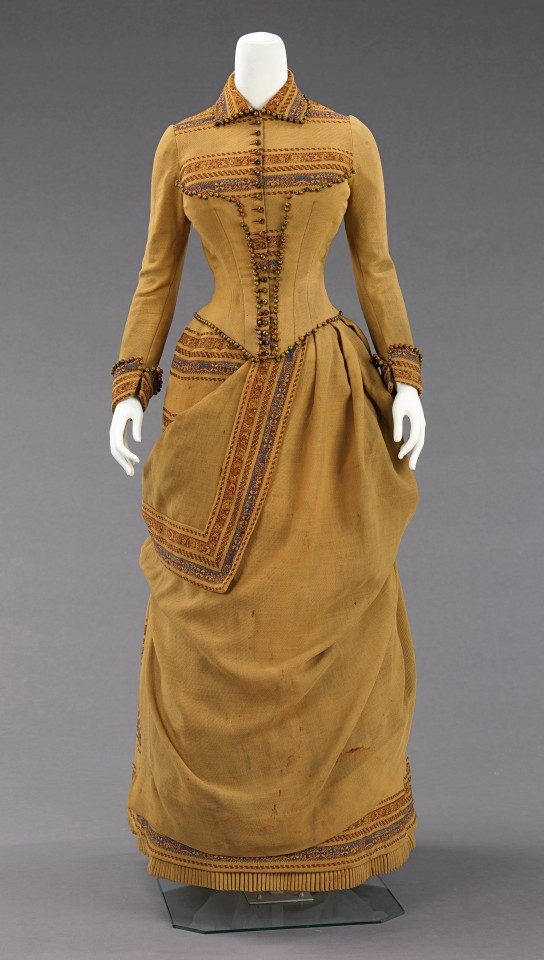


Day Dress
c.1885
United States
This dress belonged to Amelia Beard Hollenback (1844-1918), wife of the prominent financier and philanthropist John Welles Hollenback (1835-1927). In 1874, the Hollenback family settled in the neighborhood of Clinton Hill in Brooklyn. In the 19th century, Brooklyn became a metropolitan center with numerous affluent neighborhoods and a thriving downtown shopping district. Like many of the garments in Hollenback gift, this dress was most likely custom-made by a Brooklyn-based dressmaker. The unusual color and intriguing use of solid and striped wool fabric in this day dress has a folkloric aesthetic, which may have been inspired by an Amelia Hollenback's travels through the Southwest. The inventive asymmetrical draping shows a high level of sophistication and design sensibility that was atypical for a day dress.
The MET (Accession Number: 2009.300.396a, b)
#day dress#fashion history#historical fashion#1880s#19th century#1885#bustle era#gilded age#united states#yellow#gold#wool#the met#i've always been very fond of this dress
603 notes
·
View notes
Photo
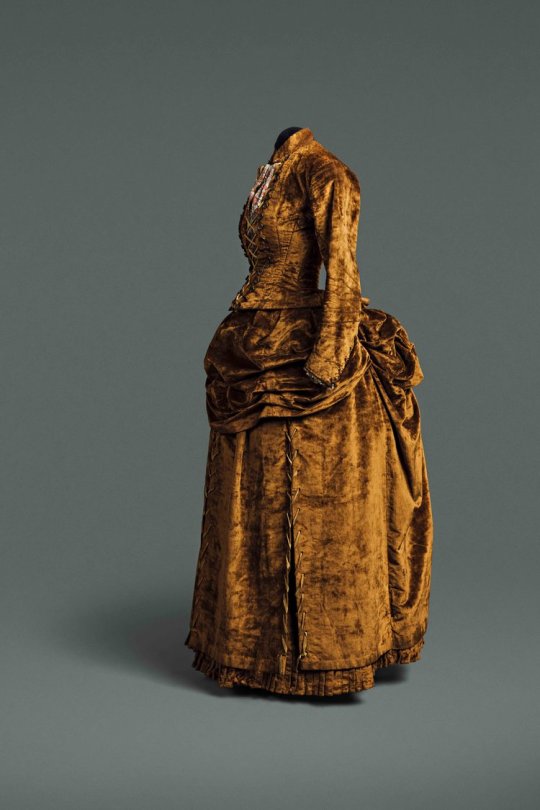
Day dress ca. 1886
From the Museum of Vancouver
605 notes
·
View notes
Text
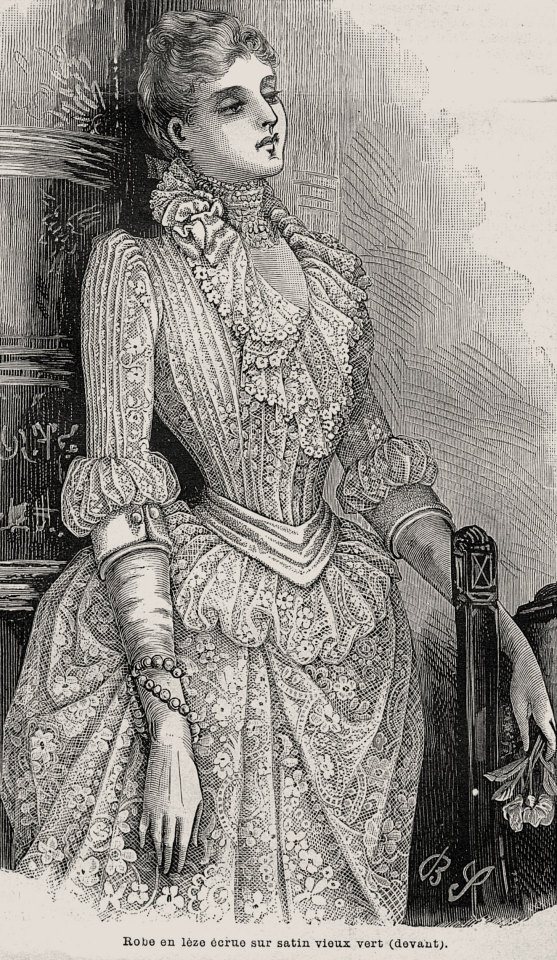
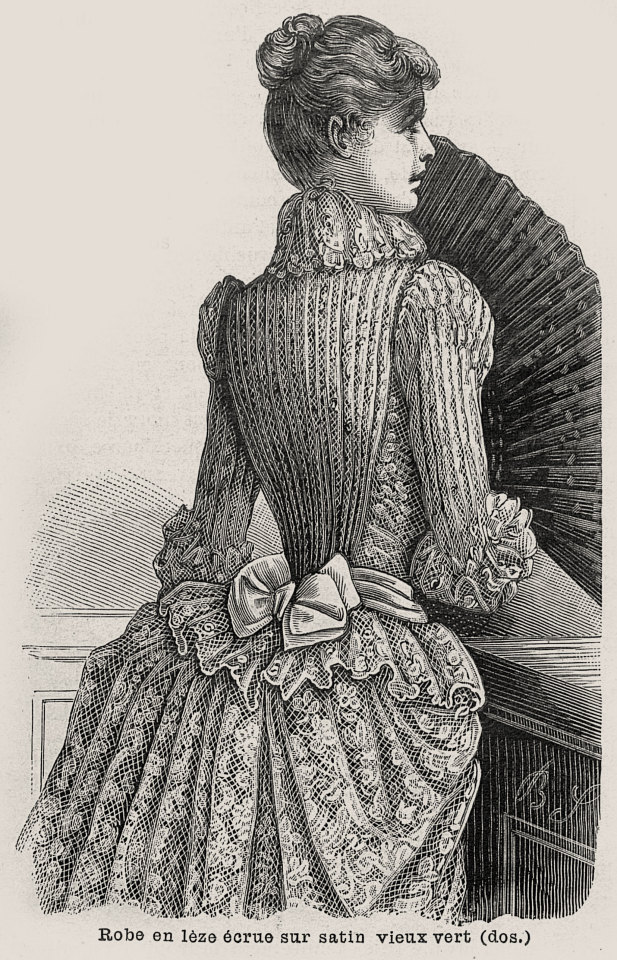
La Mode illustrée, no. 11, 15 mars 1885, Paris. Robe en lèze écrue sur satin vieux vert. Ville de Paris / Bibliothèque Forney
La jupe courte, faite en satin vieux vert, est recouverte en lèze écrue. Le corsage, ouvert en pointe devant et derrière, fait en satin vieux vert, est recouvert en lèze écrue, ouverte devant, montant jusqu'à l'encolure derrière; on dispose la dentelle en petits plis qui forment des bouillonnés au-dessous de la taille. La moitié supérieure des manches demi-longues est plissée; on fronce le bord inférieur des manches, on les garnit d'une petite bande de velours vieux vert. Une ceinture en velours vieux vert avec un nœud et une rosace en ruban de velours complètent le corsage, fermé par devant.
The short skirt, made in old green satin, is covered in ecru lèze. The bodice, open at the front and back, made of old green satin, is covered in ecru lèze, open in front, reaching up to the neckline behind; we arrange the lace in small folds which form bubbles below the waist. The upper half of the half-length sleeves are pleated; we gather the lower edge of the sleeves, we garnish them with a small strip of old green velvet. An old green velvet belt with a bow and a velvet ribbon rosette complete the bodice, closed at the front.
#La Mode illustrée#19th century#1880s#1885#on this day#March 15#periodical#fashion#fashion plate#description#Forney#dress#bustle#lace#devant et dos
127 notes
·
View notes
Photo
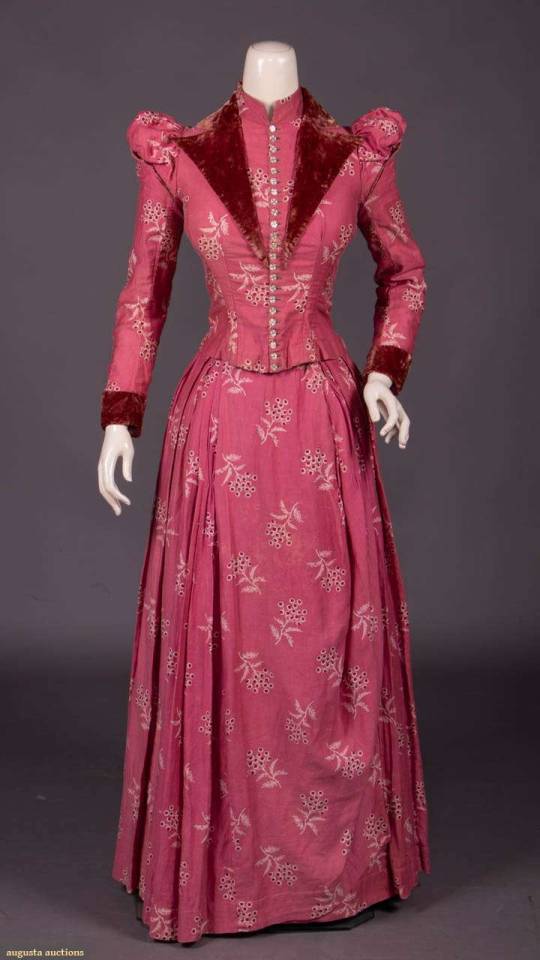
COTTON & SILK VELVET DAY DRESS, AMERICA, c. 1889
331 notes
·
View notes
Text

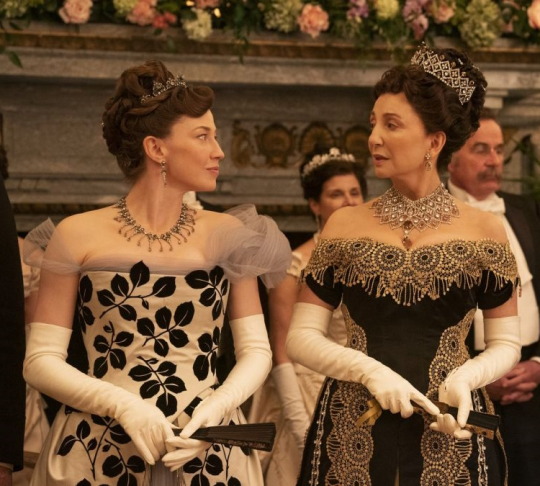



One Dress a Day Challenge
Black and White October
The Gilded Age (s1e9, "Let the Tournament Begin") / Carrie Coon as Bertha Russell (plus Donna Murphy as Lina Astor)
Mrs. Russell's dresses are always striking and sometimes border on the avant-garde. For her daughter's debutante ball, she really pulls out the stops with this magnificent off-white gown adorned with appliqued branch motifs in black. Notice how the designs extend past the edge of the bodice and also spill onto the silver-grey gauze capelet at her shoulders.
As a bonus, we also have Donna Murphy as Mrs. Astor, who also wore black and white to the ball. Her black gown with white ornaments is more conservative than Mrs. Russell's, giving it a more strongly period look.
#the gilded age#black and white october#carrie coon#one dress a day challenge#one dress a week challenge#television costumes#tv costumes#period drama#1880s fashion#1880s style#victorian era#victorian fashion#victorian style#bertha russell#the gilded age season 1#let the tournament begin#19th century costumes
51 notes
·
View notes
Note
I read today's Dracula update and went 'huh' and you seemed most likely to know. Jonathan mentions that the Count hurried in undressing him because "my pockets are intact". Does he mean that the stuff that was in his pockets last night is still there, or are 19th century mens pockets detachable somehow?
This is rather less my area of expertise than conventionally feminine clothing, but as far as I know, men's pockets in the late 1890s would have been sewn into their clothing just as contemporary women's were.
(Side tangent- Victorian women complained about pocket insufficiency just as we do today. Despite usually having skirt pockets, and sometimes waistband watch pockets, they wanted more pockets like men had about their trousers, waistcoats, jackets, and overcoats. Also specialized pockets. One lady journalist in the early 1890s complained that, because she had no waistcoat pocket in which to keep her fountain pen upright as her male colleagues did, it frequently leaked in her pocket and stained skirts she couldn't afford to keep replacing. Personally, as a pocketless 21st-century woman, I'm somewhat bitter about their position of Pocket Privilege; many extant skirt pockets measure 9"x11" or larger. But in fairness, they didn't know just how bad it would one day get.)
I assume he meant that nothing had been removed from his pockets, as you surmised. If I'm wrong, followers who may know more about historical menswear, please let me know!
#ask#captainlordauditor#dracula#dracula daily#dress history#jonathan harker#pockets#I call myself pocketless; I'm currently sewing hem braid on a day skirt that has pockets traced from an 1880s original#pockets for all!
65 notes
·
View notes
Text




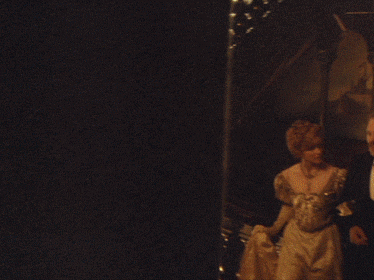


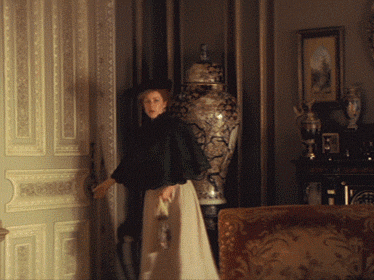


The Gilded Age
The House of Mirth (2000)
#I am so salty about the distinct lack of opera capes at the MET gala#And feathers#And sleeves#and bustles#ok story time: when I was nine we had a victorian day at school where we had to dress up as a victorian#so I convinced my granny to help me make an 1880s dress using an actual 1880s pattern#because when else was I going to be able to convince her to do such a thing#we had to alter it slightly#but we found a pattern and we scaled it down to make it fit nine year old me (like...normal seven year old size for reference)#and it had boning and ruffles and lace and a bustle#and everyone else's parents either bought them a costume or put them in a blouse and long skirt#and put all the boys in little suits#and there I was with this red faux velvet dress that whilst we had made it from mostly scraps and fabric my granny had had for years#looked like it cost more than anyone elses#anyway back to the point of the story#so it had a bustle and we'd worked really hard to get the bustle to sit just right#and despite my explaining it to everyone who teased me about it#I got tormented the entire day and called 'princess big butt'#still love bustles though#that dress ended up in a charity shop#I kinda wish I'd kept it now#but also I wanted some other little girl to have a historically accurate 1880s dress#I don't actually think I even have any photos of me wearing it#the house of mirth#my gifs#GA gifs#HoM gifs#films that made me gay#Hom#hom gifs
23 notes
·
View notes
Text
getting dressed when rewrite erik was born vs. when he was an adult! :D
#the 1880s dress reminds me so much of rewrite christine's epilogue outfit! :D#everyone else in the comments voted for the 1850s dress but i went '80s for my gal ;)#take out the gloves/hat/updo and replace the bustle with a petticoat to get an idea of how she dressed every day! ;)#rewrite erik's mom didn't bother with a crinoline#they're alike in that way- they don't care for the thiccness of their times! ;D#poto rewritten
2 notes
·
View notes
Text
Going Into Town...
Going Into Town…
Walked to town today (well, actually yesterday now) to visit with friends and do a little shopping. Fun fact: I was dressed and ready on time! 😁
Become a Patron!

View On WordPress
#1880s#Atelier Lily Absinthe#Best In The West#Day Dress#Dress Designs#Hollywood Victorian#Karin K. McKechnie-Lid#Lily Absinthe Gowns and Corsetry#The Gilded Age#The Victorian Designer#Tombstone Atelier#Victorian#Victorian Dress#Victorian Fashionista#Victorian Old West
4 notes
·
View notes
Text



Grey and Brown Cut Velvet Day Dress, ca. 1885.
Augusta Auctions.
#womenswear#grey#brown#extant garments#dress#velvet#19th century#1880s#1885#1880s dress#silk#day dress#1880s day dress#daytime#augusta auctions#1880s extant garment
12 notes
·
View notes
Photo

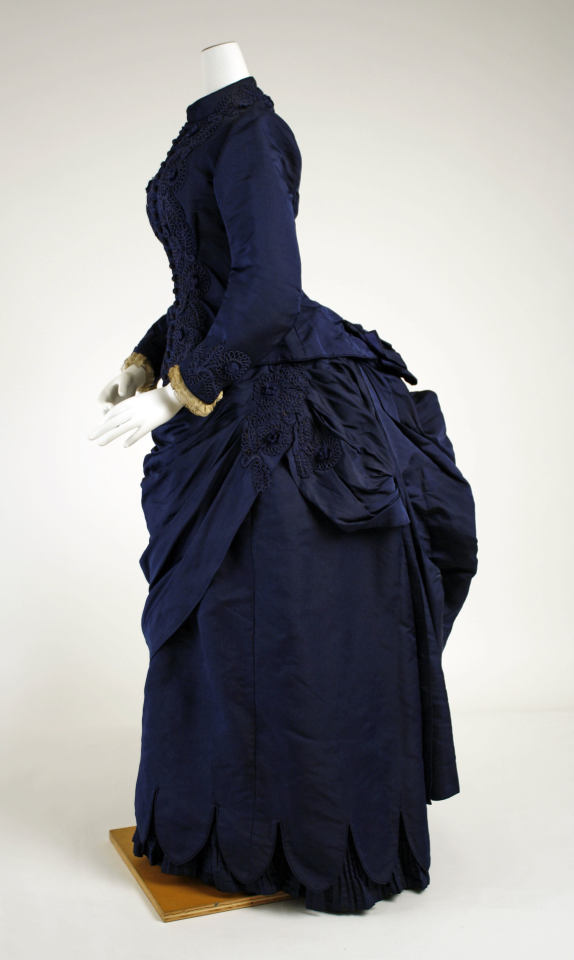

Day Dress
1880-1885
United States
The MET (Accession Number: C.I.65.2.1a, b)
#day dress#fashion history#historical fashion#1880s#bustle era#19th century#gilded age#blue#silk#up close#united states#1880#1885#soutache#braid#the met#popular
841 notes
·
View notes
Photo


Day dress ca. 1885
From Tessier-Sarou
419 notes
·
View notes
Text

La Mode illustrée, no. 8, 22 février 1885, Paris. Robe en taffetas vert-de-gris et faille chinée rose. Robe en faille et gaze chenillée. Modèle de chez Mme Coussinet, rue Richer, 43. Ville de Paris / Bibliothèque Forney
#La Mode illustrée#19th century#1880s#1885#on this day#February 22#periodical#fashion#fashion plate#Forney#dress#bustle#Modèles de chez#Madame Coussinet
98 notes
·
View notes
Text

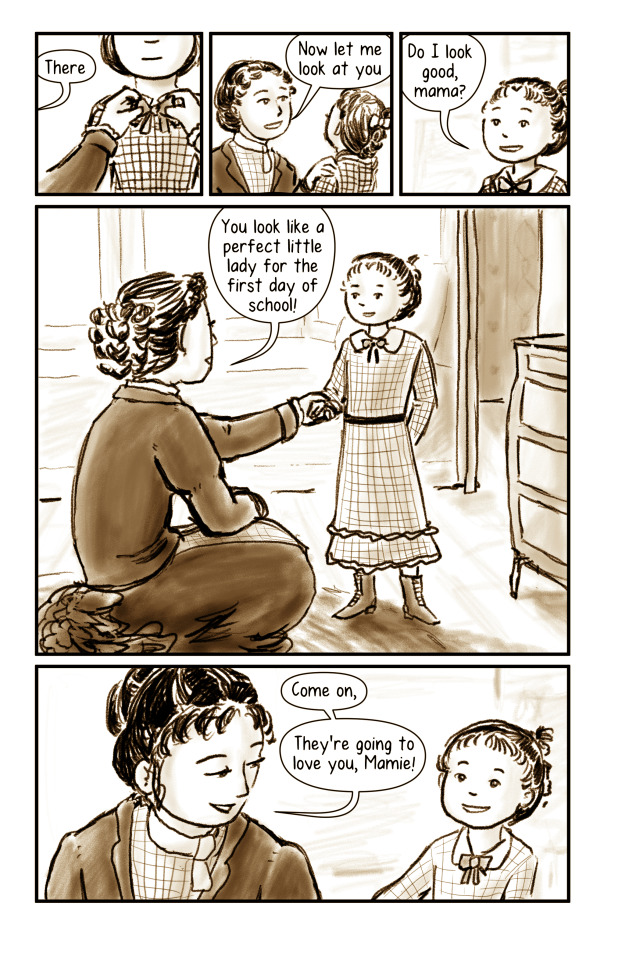
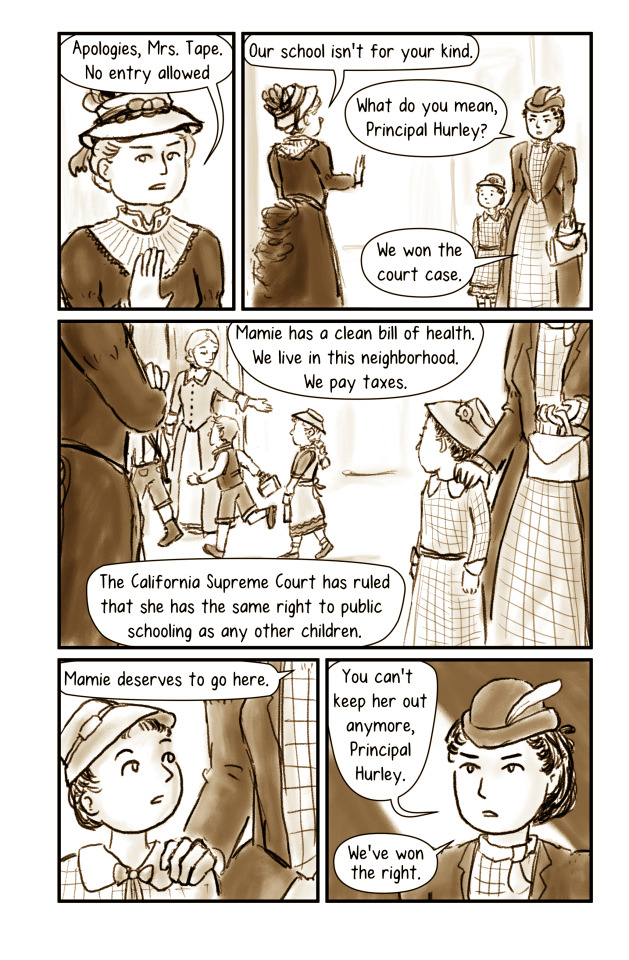
in my pursuit of ever-increasingly niche comics, I drew a 13 page comic about Tape v Hurley, a court case about Chinese-American school segregation in 1885. The rest of the pages are after the readmore, as well as on AO3 here. More obsure Chinese American court case comics are there, as well.

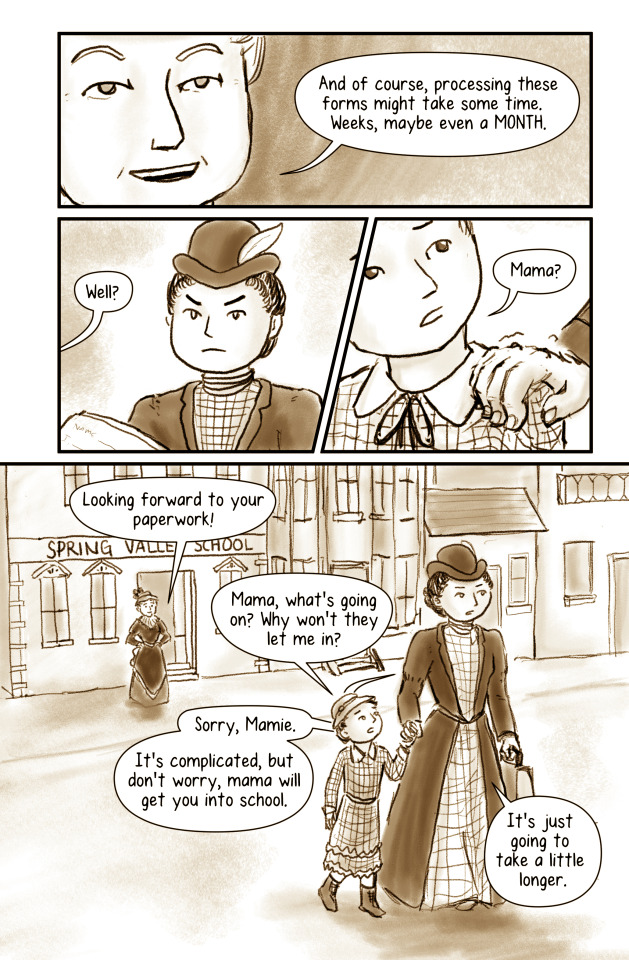
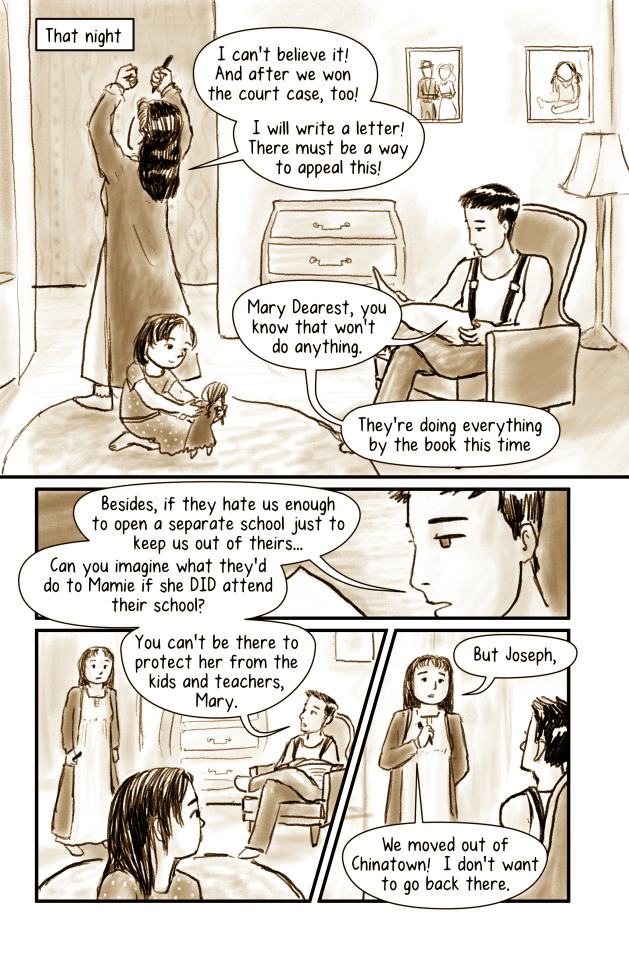
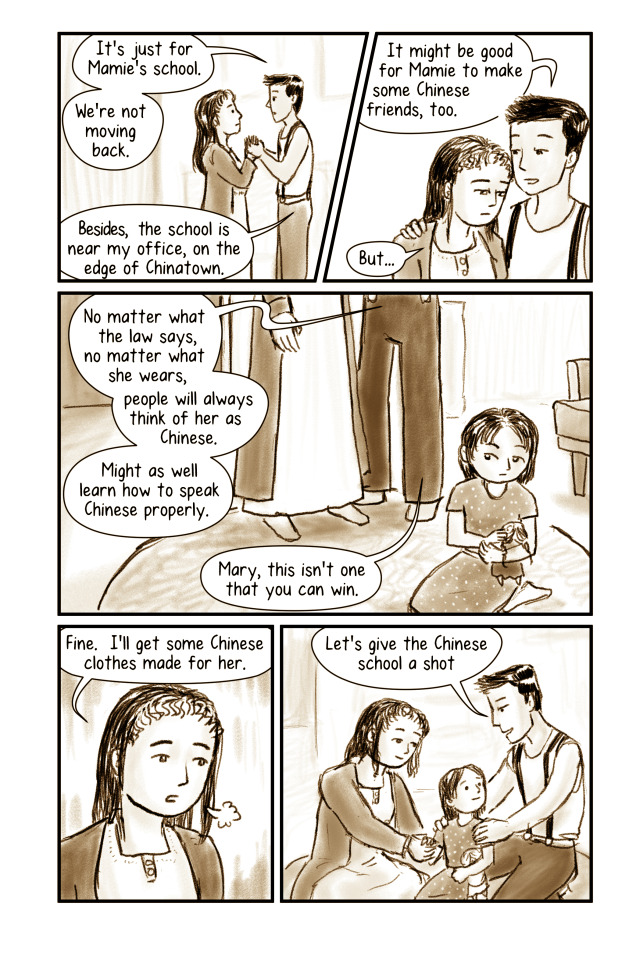
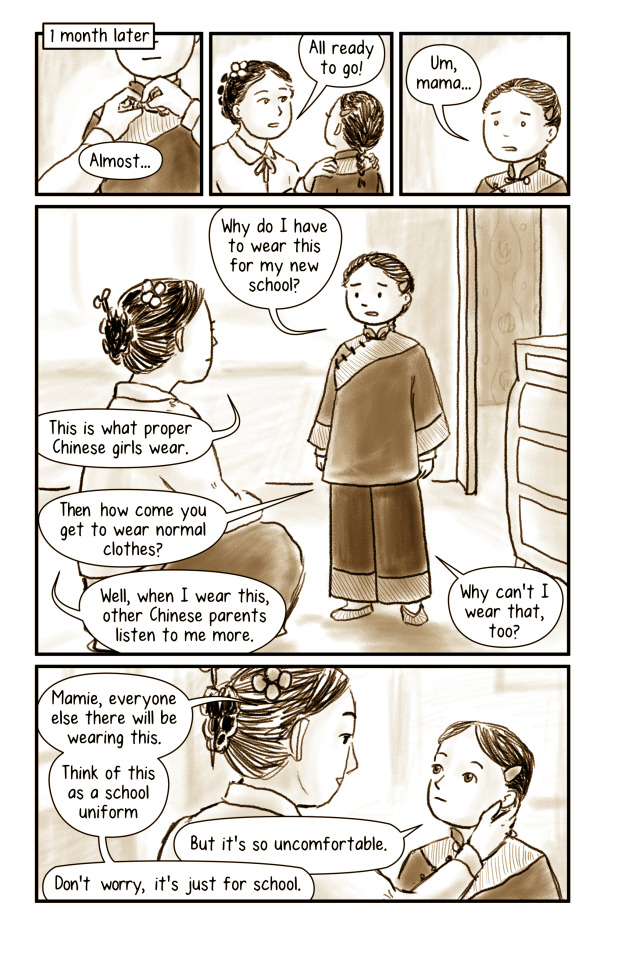
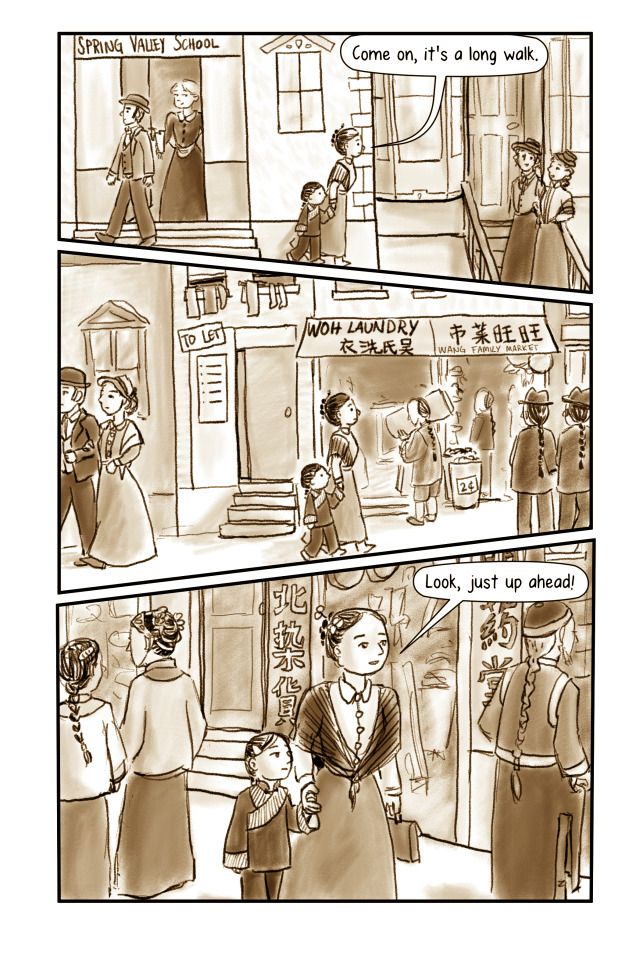
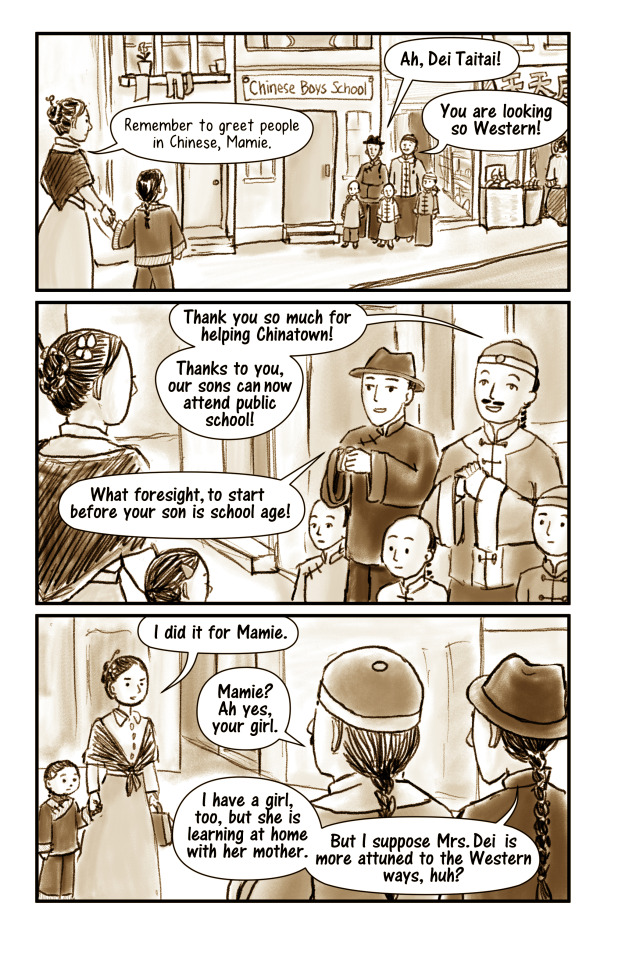
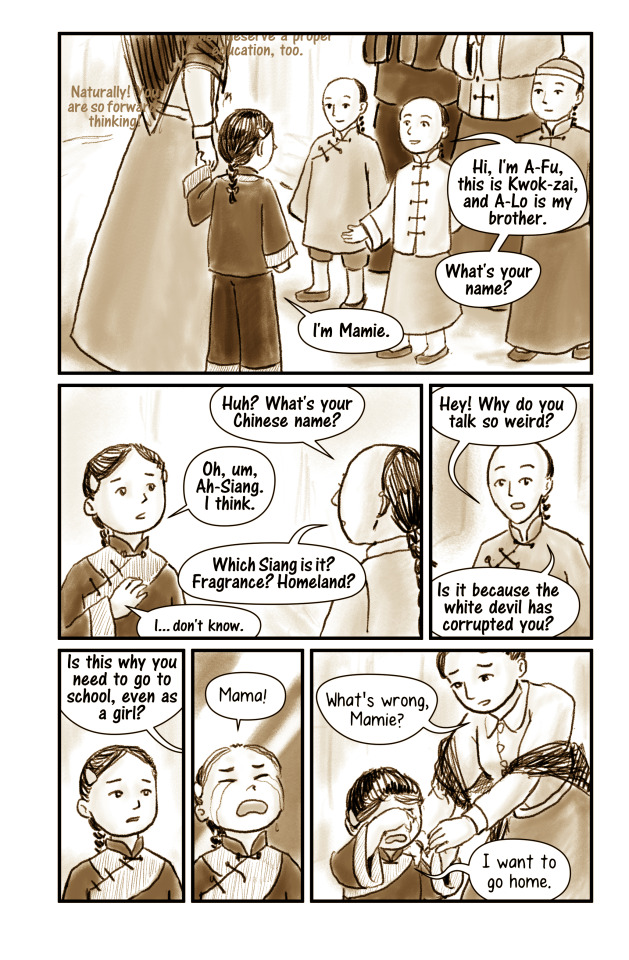
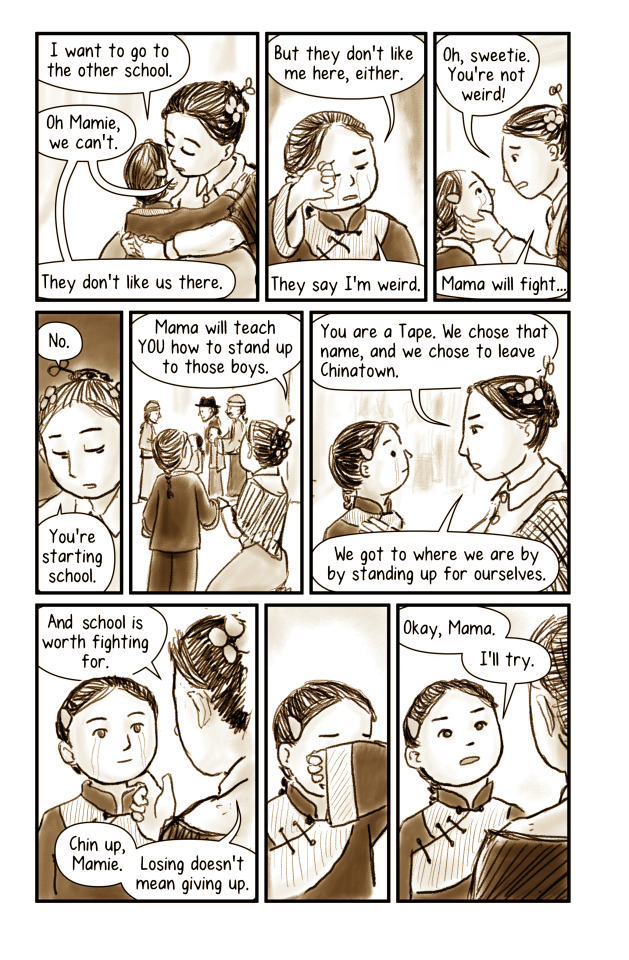
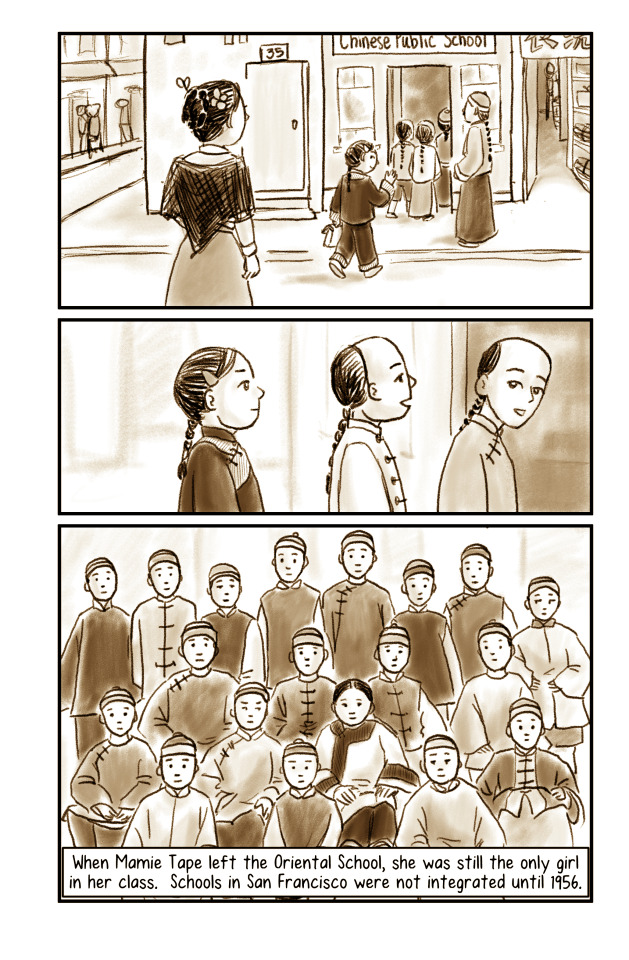
Historical Notes
Mary and Joseph Tape were not born in America, but their names and identities were very much formed in America. Joseph Tape was born Jeu Dip in Guangdong, China, immigrated the America when he was twelve, and spent his teenage years working as a house servant in an Irish household. Mary arrived in America at the age of eleven, and was found and raised as Mary McGladery in a Protestant orphanage as the only Chinese child amongst ~80 children. Both Mary and Jeu spent their formative years amongst White Christian families, so when Jeu Dip and Mary married in 1875, little wonder that Jeu picked the English name of Joseph Tape -- Joseph to match with Mary, and the German last name Tape as a nod to his former name of Dip.
The Tape family lived about 14 blocks outside of Chinatown, in a primarily white neighborhood. They dressed in Western clothing, spoke English at home, and Mamie grew up playing with non-Chinese kids. Naturally, they wanted their children to attend the local elementary school, a mere 3 blocks from their home. The principal, Ms. Hurley, denied her entrance, claiming that she was “filthy and diseased.” At the time, there was no public school option for Chinese children -- the 1870 state law stipulated separate schools for “African and Indian children” only, not Chinese. The Tape family, with the help of the Chinese Six Companies, their church, and the Chinese consulate, decided to sue, claiming that the 1880 California school code guaranteed everyone a right to public education and that this was a violation of the 14th Amendment.
They won.
But this was 1885, three years after the passage of the Chinese Exclusion Act and six years before Plessy v Ferguson. Regardless of what the California Supreme Court might decide, public sentiment was on the side of the San Francisco school district. Determined to keep out this “invasion of Mongol barbarism”, the California State Legislature passed a law permitting separate schools for Chinese children, which then allowed Principal Hurley to reject Mamie Tape once more.
While Mamie was rejected from the Spring Valley Elementary School for being Chinese, she also had a hard time fitting in to the Chinese public school. The Chinese merchants saw Western education as something primarily for boys. (Their girl children learned from their mothers at home.) Mamie, a girl dressed in Western clothes, would have stood out like a sore thumb. The final panel of the comic was based on a photo from three years later, and even then, Mamie was the only girl.
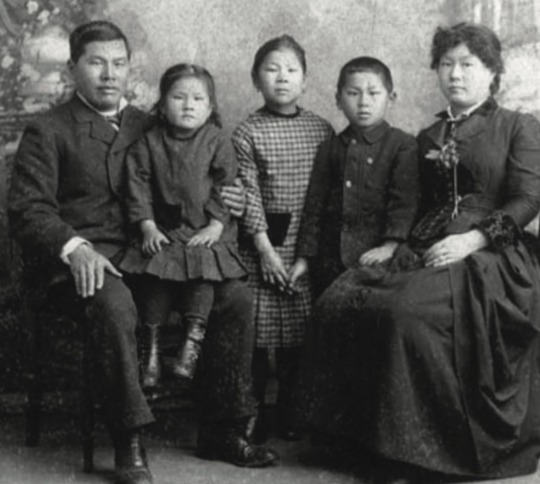
Places where I fudged the history: Frank, Mamie’s younger brother, was actually six years old and should have been more present in the comic, but I wante to keep the focus on Mamie and Mary. Also, Mamie had actually shown up to her first day of school in Western clothes. An earlier draft of the comic had a separate arc involving Mamie feeling rejected at school and Mary buying her some Chinese clothes, but that got too long and complicated.
Much of this was drawn from Mae Ngai’s book about the Tape family and their experiences as 2nd and 3rd generation Chinese Americans, titled “The Lucky Ones.”
----------
Here is Mary Tape's letter to the San Francisco School Board, 1885:
1769 Green Street.
San Francisco, April 8, 1885.
To the Board of Education -
Dear Sirs: I see that you are going to make all sorts of excuses to keep my child out off the Public schools. Dear sirs, Will you please to tell me! Is it a disgrace to be Born a Chinese? Didn’t God make us all!!! What right have you to bar my children out of the school because she is a chinese Decend. They is no other worldly reason that you could keep her out, except that. I suppose, you all goes to churches on Sundays! Do you call that a Christian act to compell my little children to go so far to a school that is made in purpose for them. My children don’t dress like the other Chinese. They look just as phunny amongst them as the Chinese dress in Chinese look amongst you Caucasians. Besides, if I had any wish to send them to a chinese school I could have sent them two years ago without going to all this trouble. You have expended a lot of the Public money foolishly, all because ofa one poor little Child. Her playmates is all Caucasians ever since she could toddle around. If she is good enough to play with them! Then is she not good enough to be in the same room and studie with them? You had better come and see for yourselves. See if the Tape’s is not same as other Caucasians, except in features. It seems no matter how a Chinese may live and dress so long as you know they Chinese. Then they are hated as one. There is not any right or justice for them.
You have seen my husband and child. You told him it wasn’t Mamie Tape you object to. If it were not Mamie Tape you object to, then why didn’t you let her attend the school nearest her home! Instead of first making one pre tense Then another pretense of some kind to keep her out? It seems to me Mr. Moulder has a grudge against this Eight-year-old Mamie Tape. I know they is no other child I mean Chinese child! care to go to your public Chinese school. May you Mr. Moulder, never be persecuted like the way you have persecuted little Mamie Tape. Mamie Tape will never attend any of the Chinese schools of your making! Never!!! I will let the world see sir What justice there is When it is govern by the Race prejudice men! Just because she is of the Chinese decend, not because she don’t dress like you because she does. Just because she is descended of Chinese parents I guess she is more of a American then a good many of you that is going to prewent her being Educated.
Mrs. M. Tape
#original comic#chinese american history#legal history#turns out there's a lot of chinese american court cases#that i have a lot of feelings about#my comic#mine
1K notes
·
View notes
Text
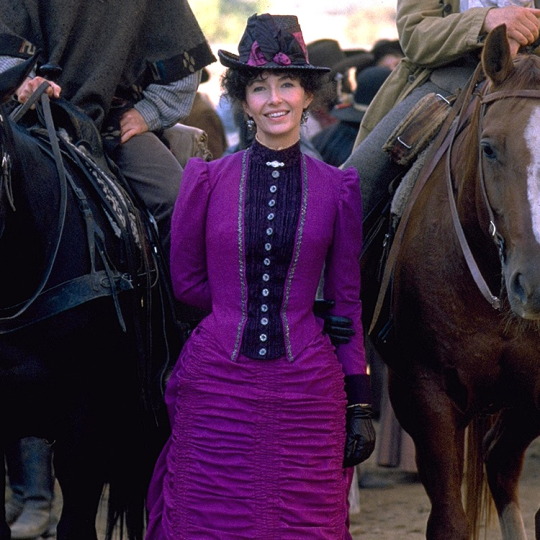


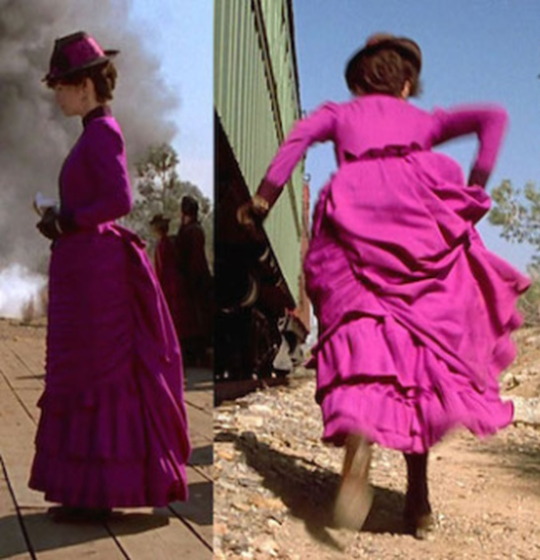



One Dress a Day Challenge
May: Purple Redux
Back to the Future, part III / Mary Steenburgen as Clara Clayton
As can be seen from the photos above, the color of this dress varies greatly based on the lighting. In the actual film, it appears as a rich purple and the inset down the front is a much deeper shade, almost black. Photos from an auction show it as much lighter, more of a raspberry-pink, while the dress on display at Universal Studios looks more like it does in the film.
I've included a close-up of the front to show the flower-shaped buttons, the faint floral pattern on the darker inset, and the trim down the sides of the "jacket." In the film, Clara also wears a bar-shaped brooch with her name engraved on it at the neck. Black leather gloves and a hat with black and purple ribbons are the finishing touches.
#back to the future part iii#purple dresses#mary steenburgen#one dress a day challenge#one dress a week challenge#movie costumes#1880s style#1880s fashion#victorian era#victorian style#victorian fashion#1990 films#1990 movies#back to the future part 3#bttf#clara clayton#purple dress#purple redux
84 notes
·
View notes